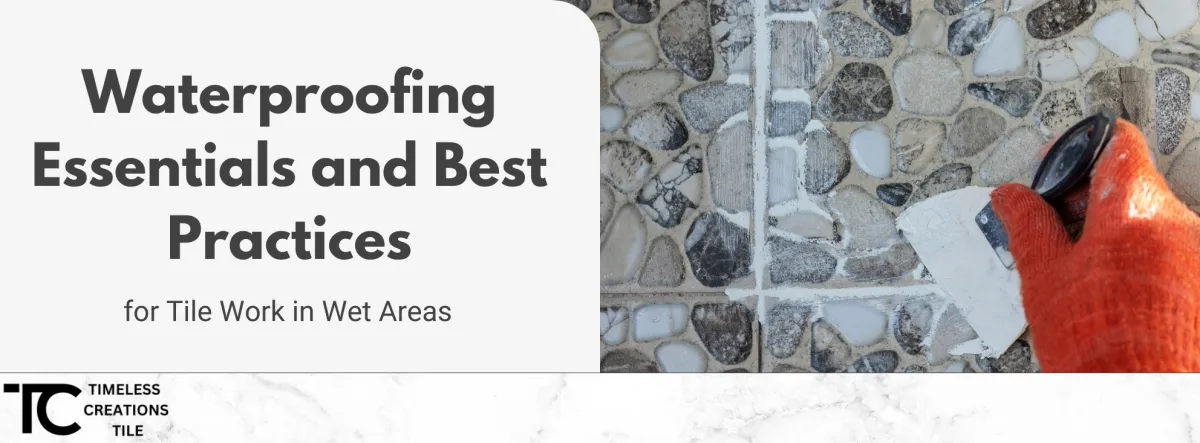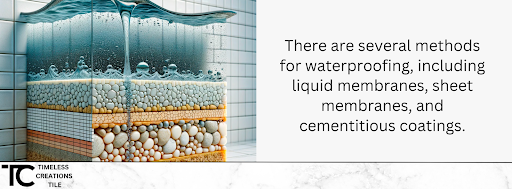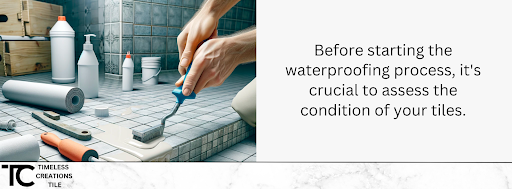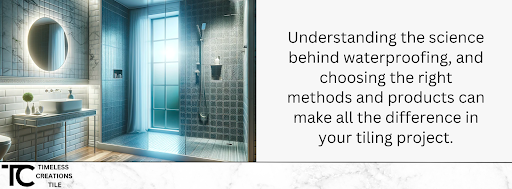
Waterproofing Essentials and Best Practices for Tile Work in Wet Areas
Waterproofing Essentials and Best Practices for Tile Work in Wet Areas
Introduction: The Critical Importance of Waterproofing
When it comes to tiling in areas like bathrooms and kitchens, waterproofing isn't just a recommendation; it's a necessity. These spaces are constantly exposed to moisture, steam, and water, which can lead to significant issues like water damage, mold growth, and even structural decay. The aim of this blog is to underscore the importance of waterproofing in preventing these problems and maintaining the integrity and beauty of your tile work. We'll delve into how tiles and grout, though seemingly impervious, can actually be quite porous, and how different waterproofing methods, such as liquid membranes, sheet membranes, and cementitious coatings, play a vital role in protecting these areas.

The Science Behind Waterproofing
Tiles and grout, commonly used in kitchens and bathrooms, are not as watertight as they may seem. Both materials can absorb water, which can lead to various issues including damage to the tiles and grout themselves, as well as the underlying structures. Understanding this, it becomes clear why waterproofing is so crucial. There are several methods for waterproofing, including liquid membranes, sheet membranes, and cementitious coatings. Each of these has its own application methods and benefits, and the choice depends on factors such as the type of tiles, the area of application, and the level of exposure to water. Liquid membranes are popular for their ease of application and flexibility. Sheet membranes offer a more rigid option but provide excellent resistance against water ingress. Cementitious membranes are another option, ideal for outdoor use due to their robust nature.

Step-by-Step Guide on Waterproofing
Assessing Tile Condition: Before starting the waterproofing process, it's crucial to assess the condition of your tiles. Look for any loose or cracked tiles and check for signs of water damage or mold. These issues need to be addressed before proceeding with waterproofing.
Preparation: Properly preparing the surface is key to successful waterproofing. This involves cleaning the tiles thoroughly to remove any dirt, grease, or soap scum. The surface must be primed to ensure good adhesion of the waterproofing material.
Application Techniques:
For liquid membranes, apply using a brush or roller, adhering to the manufacturer’s instructions for thickness and drying times. Apply a second coat in the opposite direction for even coverage.
For sheet membranes, measure and cut the membrane to fit the surface, apply adhesive, and press it onto the tiles, ensuring a tight seal.
For cementitious membranes, mix the product with water and apply it with a brush or trowel, creating a robust and waterproof barrier.
Recommended Products: Some of the recommended products for waterproofing include Schluter Kerdi Membrane, Kerdi Board, and Ardex 8+9. Each of these products has unique properties and benefits, suitable for different waterproofing needs.

Conclusion: The Necessity of Waterproofing
In conclusion, waterproofing in tile installations in wet areas is not just an optional step but a fundamental necessity. It ensures the longevity and durability of the installation, prevents costly repairs, and maintains the aesthetic appeal of the space. Understanding the science behind waterproofing, choosing the right methods and products, and following a careful application process can make all the difference in your tiling project.
